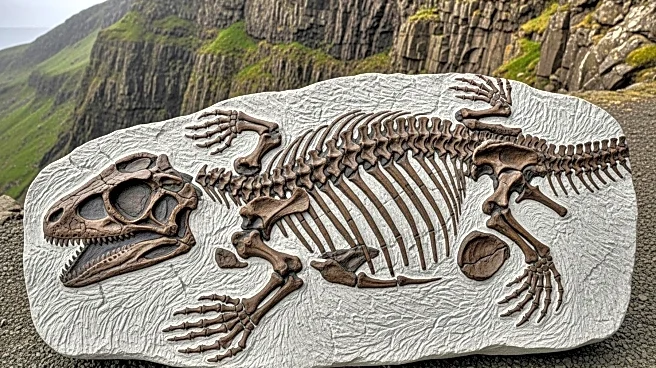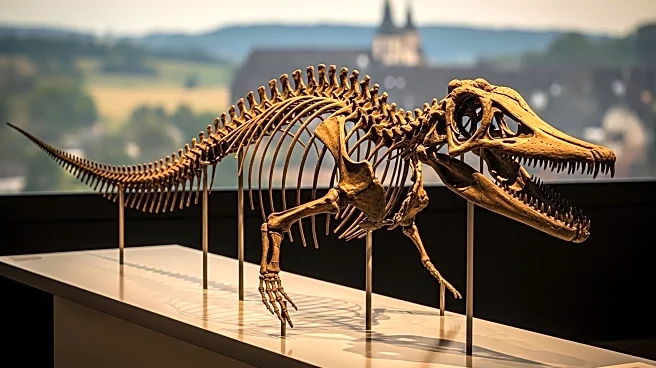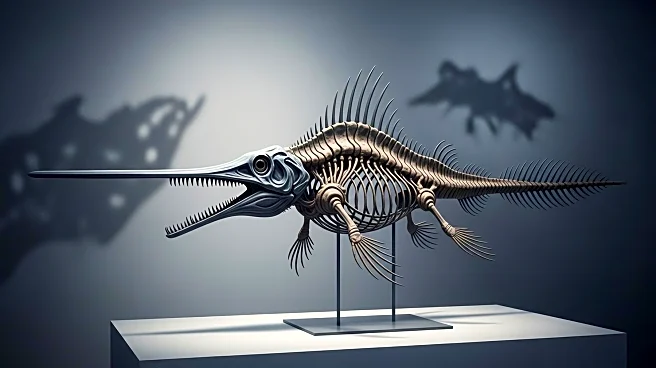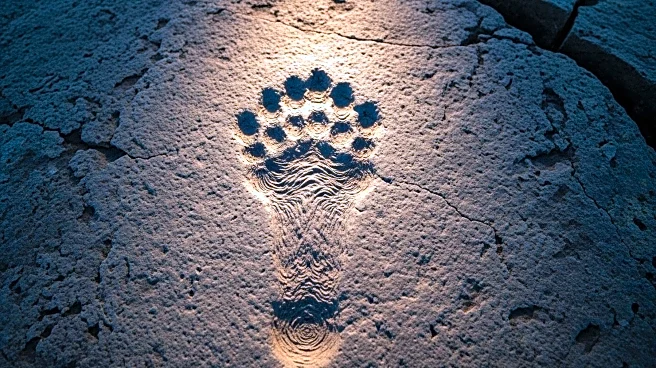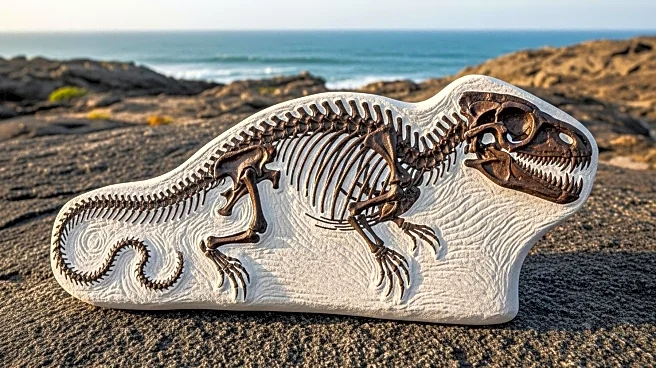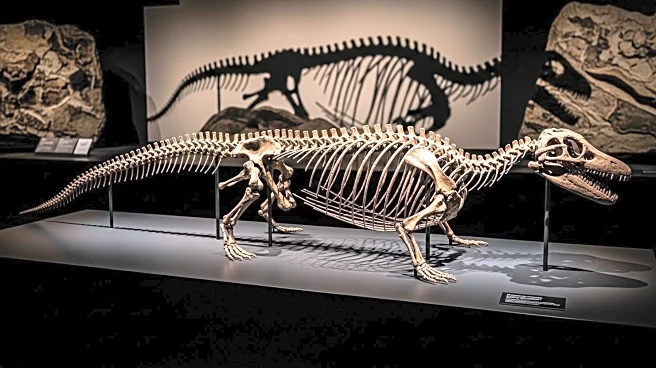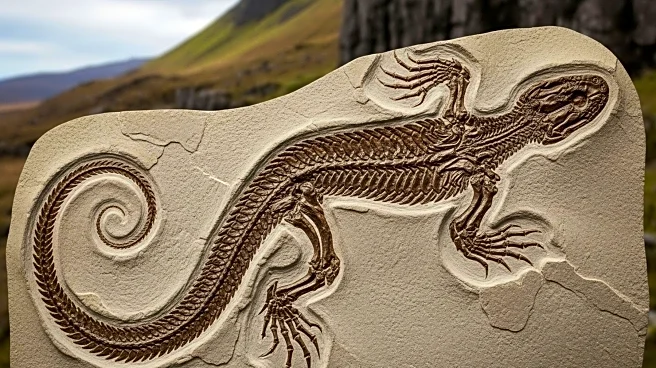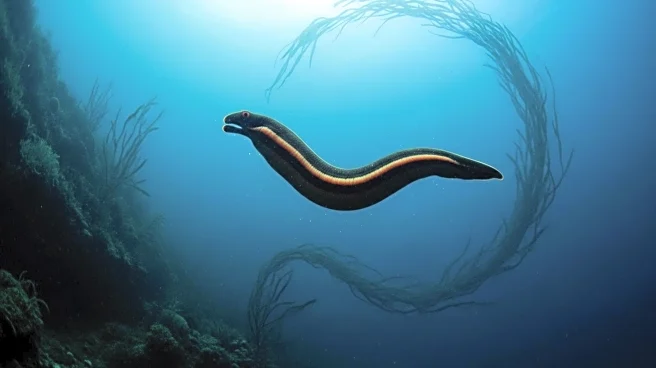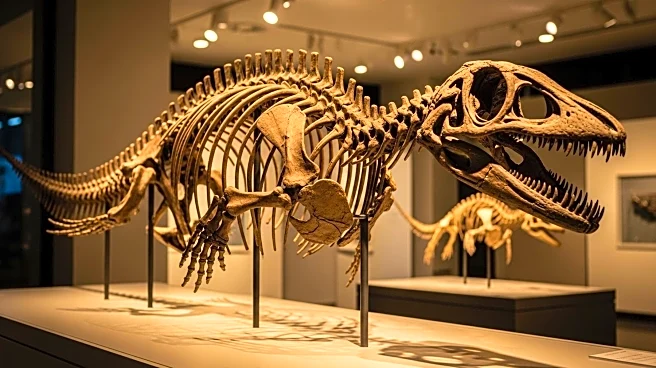What is the story about?
What's Happening?
A new species of reptile from the Jurassic period has been discovered on the Isle of Skye, named Breugnathair elgolensis. This fossil, dating back approximately 167 million years, was found by Dr. Stig Walsh, a curator at National Museums Scotland. The discovery is significant as it provides new insights into the evolution of lizards and snakes. The fossil features snake-like fangs and jaws, yet retains the proportions and limbs of a lizard, suggesting a complex evolutionary history. Researchers from the University of Cambridge, University of the Witwatersrand, and University College London were involved in the study, which utilized high-power X-rays to analyze the fossil. The findings have been published in the scientific journal Nature, highlighting the importance of the Isle of Skye as a key site for Middle Jurassic fossils.
Why It's Important?
The discovery of Breugnathair elgolensis is crucial for understanding the evolutionary lineage of snakes and lizards. This fossil provides evidence that snake ancestors may have had more primitive features than previously thought, challenging existing theories about their evolution. The research could lead to a reevaluation of the evolutionary pathways of these reptiles, impacting scientific understanding of their development over millions of years. The Isle of Skye continues to be a significant location for paleontological research, contributing valuable data to the global scientific community. This discovery not only enriches the fossil record but also enhances the understanding of reptilian evolution, potentially influencing future studies in evolutionary biology.
What's Next?
Further research is expected to continue on the Isle of Skye, as it remains a rich source of Middle Jurassic fossils. Scientists may conduct additional studies to explore the evolutionary traits of Breugnathair elgolensis and its implications for the ancestry of snakes and lizards. The use of advanced imaging techniques, such as high-power X-rays, will likely play a crucial role in uncovering more details about the fossil's structure and evolutionary significance. Collaboration among international research teams will be essential in advancing the understanding of this new species and its place in the evolutionary timeline.
Beyond the Headlines
The discovery of Breugnathair elgolensis raises intriguing questions about the ethical and cultural dimensions of paleontological research. As scientists uncover more fossils, the preservation and protection of these sites become increasingly important. The involvement of multiple international institutions highlights the collaborative nature of scientific research, emphasizing the need for shared resources and knowledge. Additionally, the naming of the species in Gaelic reflects a cultural acknowledgment of the region's heritage, fostering a connection between scientific discovery and local identity.
AI Generated Content
Do you find this article useful?
